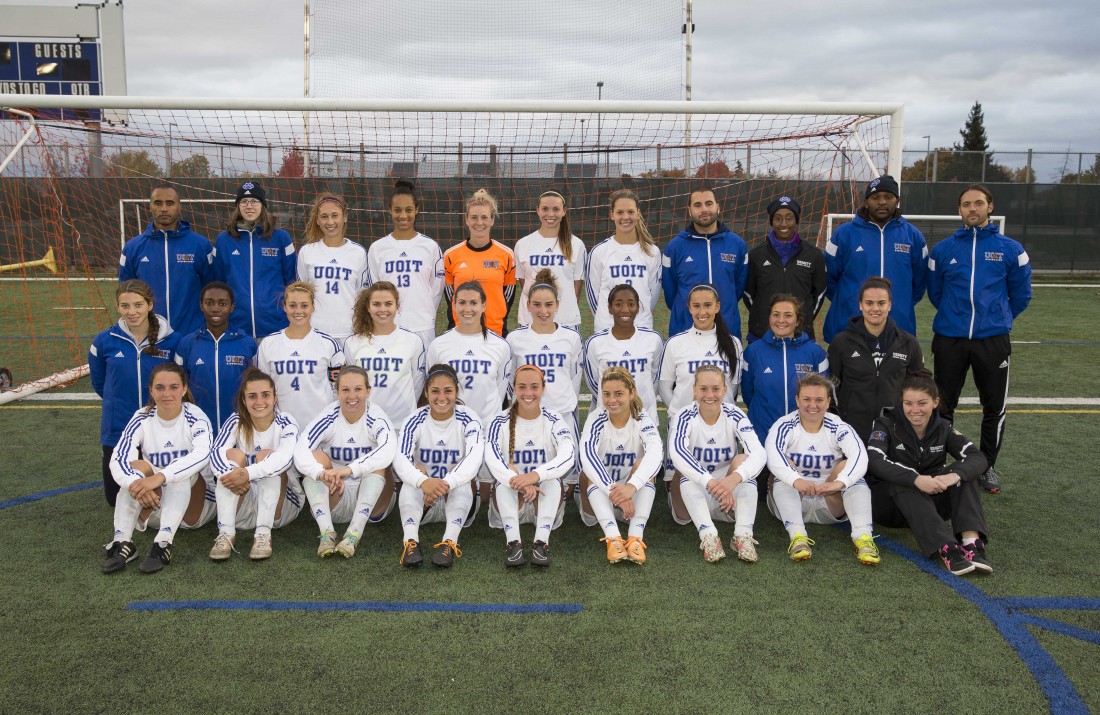This year marks my 3rd season as Assistant Coach and Fitness Coach with the University of Ontario Institute of Technology (UOIT) Ridgebacks Women’s Varsity Soccer Team. The Women’s Soccer program at UOIT itself also happens to be only 3 years old, having been introduced in the winter of 2012. The first three years in our team’s history have been very successful. We qualified for the play-offs in year one, and improved upon that record in year two by advancing to the OUA West Quarter-Finals. Moving into a new division (OUA East) in year three. we finished the season in 2nd place, with a 12-2-2 record (going unbeaten in our first 12 games), and even earned a CIS National Top-10 ranking for the majority of the year, finishing with a #7 ranking heading into the play-offs. We continued to get good results in the post-season, earning a bronze medal in the OUA Final Four, plus a place in the 2014 CIS National Championships at Laval University in Quebec City, as the 3rd place team from Ontario. The success of the UOIT Ridgebacks Women’s Varsity Soccer Team owes itself to numerous factors and people, the most important of which is the Head Coach who literally built the team from scratch three years ago, Peyvand Mossavat (he was also named OUA East, and CIS Coach of the Year this season). I am honored to have been a part of the coaching staff since the team’s inception, and to have contributed to its impressive performances on the pitch.
My next four posts will briefly describe of the four physical preparation strategies that I and the Coaching Staff used, which have contributed to our team’s success over the past three year in general, and specifically during the incredible 2014 season:
Conduct the right fitness assessments (at the right time):
Of course, part of the process in recruiting players who are good athletes, as well as training to develop and maximize their athletic abilities, is having the right fitness assessment protocol to measure them. The best time to test for speed and jumping ability is in the off-season or the beginning of the season. This is because it is difficult to train to improve speed and jumping ability, so testing should be used to identify who is already good at these abilities. Tests of high intensity running ability (like the Yo-Yo tests) must be used consistently (every 4 to 6 weeks) throughout the off-season, summer, and pre-season. If athletes are training properly, there is a very large capacity to improve, and the Yo-Yo test in particular is very sensitive to improvements in fitness through training.


Leave A Comment